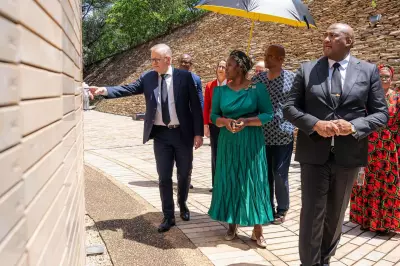
Australia is uniting with global forces this November to confront one of the fastest-growing human rights emergencies of our time: technology-facilitated abuse against women and girls.
Starting November 25, the nation will participate in the United Nations' worldwide campaign to eliminate violence against all women and girls, with the 2025 initiative specifically targeting digital abuse that increasingly spills into real-world harm.
The alarming reality of digital abuse in Australia
Recent findings paint a disturbing picture of technology's weaponisation in domestic settings. Australia's National Research Organisation for Women's Safety (ANROWS) estimates one woman is killed every week by an intimate or former partner, while broader research indicates a staggering one in two Australians has experienced technology-based abuse.
E-safety commissioner Julie Inman Grant emphasised the gravity of these statistics, noting they reinforce the widespread prevalence of this abuse type and heightened risks for minority groups.
"The ANROWS research is a stark reminder that more needs to be done to ensure all Australians can live their lives free from physical, psychological and emotional harm - online and offline," Ms Inman Grant stated.
How perpetrators misuse technology
The commissioner highlighted the strong connection between technology-facilitated abuse and family violence, with 40 per cent of female victim-survivors and 32 per cent of males reporting abuse from a partner or former partner.
"This supports what we've been hearing from frontline services we work with: domestic violence perpetrators are using both low-tech and high-tech methods to control, demean and silence," she explained.
Common forms of digital abuse include:
- Non-consensual sharing of intimate images
- Cyberbullying, online threats and trolling
- AI-generated deepfakes
- Doxxing (publishing private information)
- Online stalking and surveillance
- Impersonation and catfishing
Turning technology into part of the solution
While technology currently gives perpetrators round-the-clock access to their targets, Ms Inman Grant believes it can also be part of the solution.
"We must adjust our collective mindset and flip our focus - from what victim-survivors can do to stay safe, to what society must do to end abuse and hold perpetrators to account," she urged.
The Australian government is investing $10 million over five years to combat technology-facilitated gender-based violence against women and children, signalling a strong commitment to addressing this crisis.
"It's time for all users, creators and advocates of technology to help us reimagine a safer, more inclusive, more respectful future," Ms Inman Grant concluded.
For advice on staying safe online and reporting abuse, visit esafety.gov.au. If you or someone you know is experiencing domestic, family or sexual violence, call 1800RESPECT on 1800 737 732 or text 0458 737 732. Aboriginal and Torres Strait Islander people can access support through 13YARN, while the Men's Referral Service provides guidance on 1300 766 491. In immediate danger, call Triple Zero (000).





